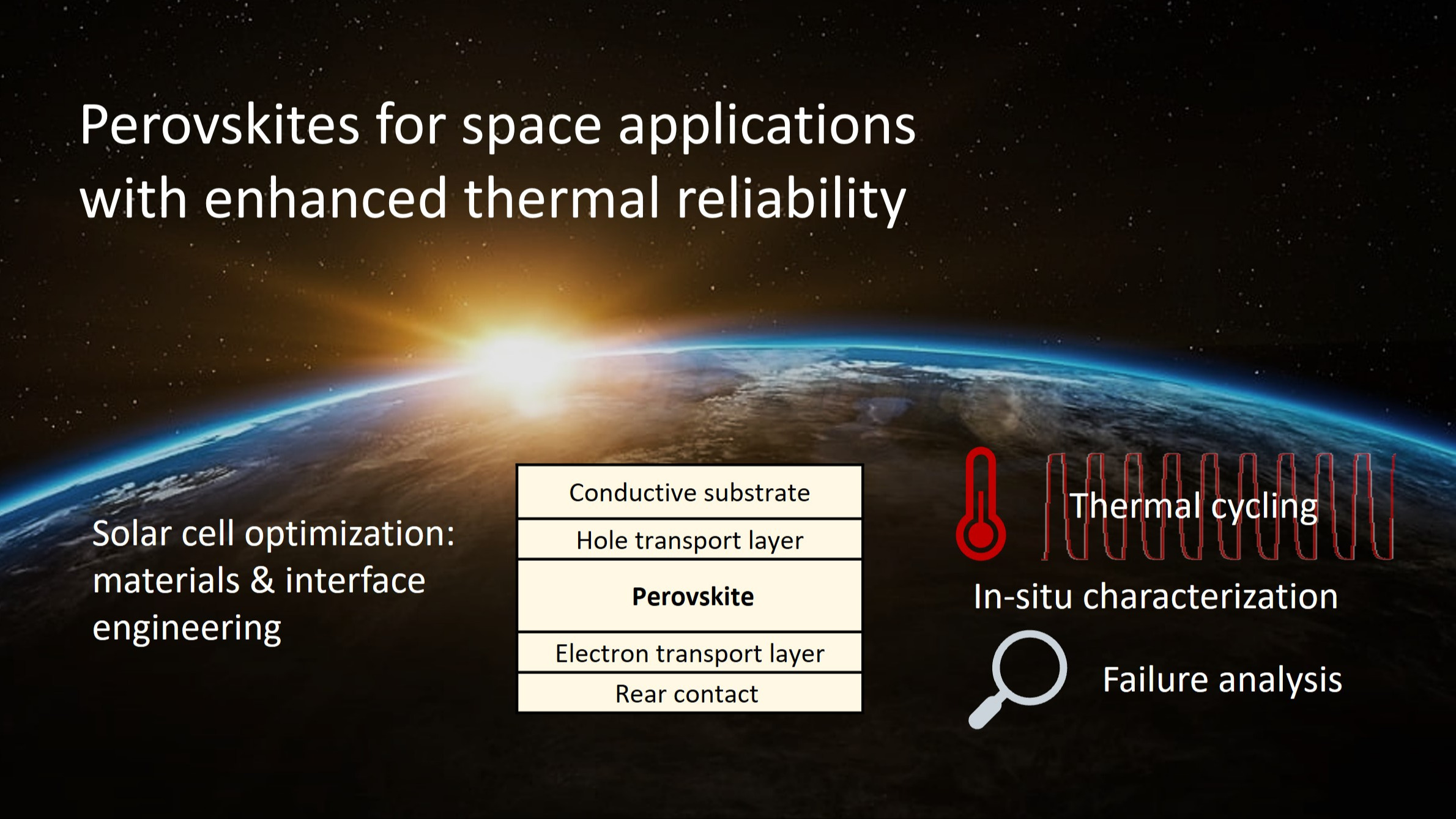Duration: 18 months
Perovskite thin-film solar cells (PSC) have reached high solar-to-electricity conversion efficiencies of 27% (AM1.5G) and can potentially be manufactured at significantly lower costs than conventional solar cells, especially compared to III-V materials. For terrestrial photovoltaics (PV), a budding market is emerging. Also, due to their superior power-to-weight ratio, PSCs are considered for future satellite missions. We aim to enhance the readiness of perovskite-based PV for space applications. Importantly, while high radiation hardness of metal-halide perovskite solar cells has been demonstrated in other studies [1-13], we will focus on device reliability regarding the often-underexplored extreme temperature cycling.
Highly efficient PSCs consist of a ~0.5 µm thin metal-halide absorber, which is sandwiched between various charge-selective layers. So far, this device stack was mainly optimized for terrestrial photovoltaic modules, which only need to sustain relatively moderate temperatures between -40°C to +85°C. However, on satellites, more extreme temperature cycles from -120°C to 120°C are common, inducing strain, ion migration, interfacial degradation or phase transitions (at lower T). In addition, mismatched thermal expansion coefficients can lead to delamination effects of the semiconductor layers.
Here, we tackle these challenges by developing robust PSCs, exposed to extreme temperature cycles which then will be optimized further for the challenges in space. Solar cells will be thoroughly characterized before and after thermal cycling. In-situ measurements of current-voltage curves (JV) and time-resolved photoluminescence (TR-PL) will provide insights into possible degradation mechanisms. In addition, electroluminescence (EL), X-ray diffraction (XRD) and scanning electron microscopy (SEM) will be used for in-depth failure analysis. Thereby PSC with superior stability with respect to extreme temperature cycles will be developed.

